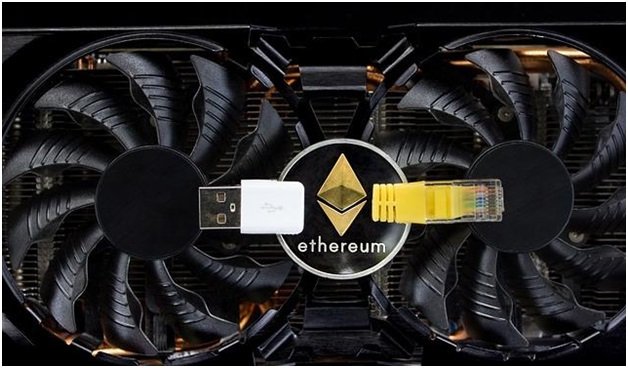The Ethereum blockchain involves many node operators that run and maintain the network’s security, integrity, and transparency. You, too, can contribute to the network’s decentralized infrastructure and be rewarded for your efforts. The core of the Ethereum 2.0 architecture is the Proof-of-Stake consensus mechanism, which eliminates the need for resource-intensive mining and reduces energy consumption. All staking rewards are paid out to validators in the native cryptocurrency of the Ethereum blockchain, Ether, primarily regarded as one of the most ambitious digital assets. The price of ETH can fluctuate without affecting the real price of gas.
Gas is vital to the Ethereum network – it’s required to conduct a transaction or execute a contract on the blockchain platform. The gwei is widely used as a measure of gas prices, with one gwei having the same value as one billionth of an ETH. Each transaction involves computational resources to execute, so it’s necessary to recover the cost of the investment to ensure Ethereum isn’t vulnerable to spam. The fee is paid irrespective of the transaction’s success or failure. Gas fees on the Ethereum network hinge upon complexity, the base fee, and the priority fee. Multiply the gas limit by the gas fee to get the total amount.
Gas Prices on The Ethereum Blockchain Are Influenced by Network Demand
You can determine the amount of gas you’re willing to pay when submitting a transaction. If you offer too little, node operators won’t choose your transaction for inclusion, but if you offer too much, you risk wasting your funds. Binance data shows that gas costs can vary depending on network congestion, which means that prices can fluctuate dramatically, causing delays. As the network becomes congested, you have to dig deep into your pocket to have your transaction prioritized by validators. Ethereum scaling solutions, such as Arbitrum, Polygon, and ImmutableX, are instrumental in reducing gas costs and improving user experience.
Ways To Cut ETH Transaction Fees to A Bare Minimum
To avoid exorbitant Ethereum gas fees, there are several solutions you can resort to, such as:
Carefully Time Your Transactions
There’s always a good time to carry out your transactions, so if you want to save a little bit of money from gas fees, consider trading when there’s less demand on the Ethereum network. Simply put, avoid making transactions during certain times of the day. As a rule, the Ethereum blockchain is busy from 8 a.m. to 1 p.m. when the U.S. and Europe are awake and at work. Conversely, the least busy period is between 9 p.m. to 11 p.m. when the work day is coming to a close and everyone is getting ready to go to bed. The point is that if your transaction isn’t urgent, you can cut your costs by half by sending it when the network is the least busy – it’s the time when ETH gas fees are lowest.
Implement Similar Transactions Simultaneously
Categorize the bulk of your transactions by type to avoid excess spending. The same transaction costs the same gas units, meaning that computation is done using deterministic gas units. So, instead of sending one token to a single address, you’re better off sending 1000 tokens in one transaction. There are three types of transactions supported on Ethereum – the transfer of ETH from one party to another, the creation of a smart contract, and transacting with a smart contract. Simple transactions require 21000 units of gas. There’s no guarantee all transactions will be executed in the same block.
Use The DeFi Saver App
Decentralized finance (DeFi) takes vital elements of the work done by banks, such as lending, borrowing, and trading, and empowers ordinary people. It’s an emerging field that allows you to make transactions directly with others. Ethereum gas fees are intimately linked to the DeFi ecosystem – a fee is required by the chain to conduct a transaction on the blockchain successfully. The good news is that you can use the DeFi Saver app, which has all your needs covered. It uses gas trackers to monitor how prices are trending so you can adjust your Ethereum activities to minimize expenses. You’ll know exactly how much the base fees change during any given time period.
Take Advantage of a Layer-2 Blockchain
Ethereum’s ecosystem has advanced considerably. Still, the underlying technology isn’t ready to handle it all, so Ethereum still needs scaling solutions to improve its efficiency and output. For the most part, gas fees are dramatically lower than on the base blockchain, so think about using Polygon, Arbitrum, or Optimism when transferring ETH. Polygon has its own native cryptocurrency, MATIC, used to pay for gas, so it has an advantage over other scaling solutions as it’s not necessary to transfer ETH tokens into the Polygon mainnet. Using a dApp, you can trade, deposit, and take out loans.
Look Into Gas Tokens
In case you didn’t already know, tokens can be minted when gas prices are low enough and destroyed (burned) when gas prices are high. There are two ways to get a gas refund: clearing storage within a smart contract and destroying a contract. You get a discount on your fee, which is applied after the transaction is finalized. It costs more gas to destroy a contract than to create it, gas token usage results in consuming more computational resources. The savings emerge from the difference in gas price, in other words, how much Ether per gas unit you pay.
The Takeaway
All in all, a higher gas price increases the chances of a transaction being processed in a timely manner, but it also incurs higher expenses. If you’re looking forward to owning and trading Ethereum, understand and minimize your gas fees. Actively buying/selling on the platform and participating in DeFi cause you to pay fees that quickly add up. There’s no way to avoid gas fees on transactions completely, but you can reduce them. You could look at some alternatives to Ethereum, such as EOS or Tezos, which are similar with regard to the technical setup.








